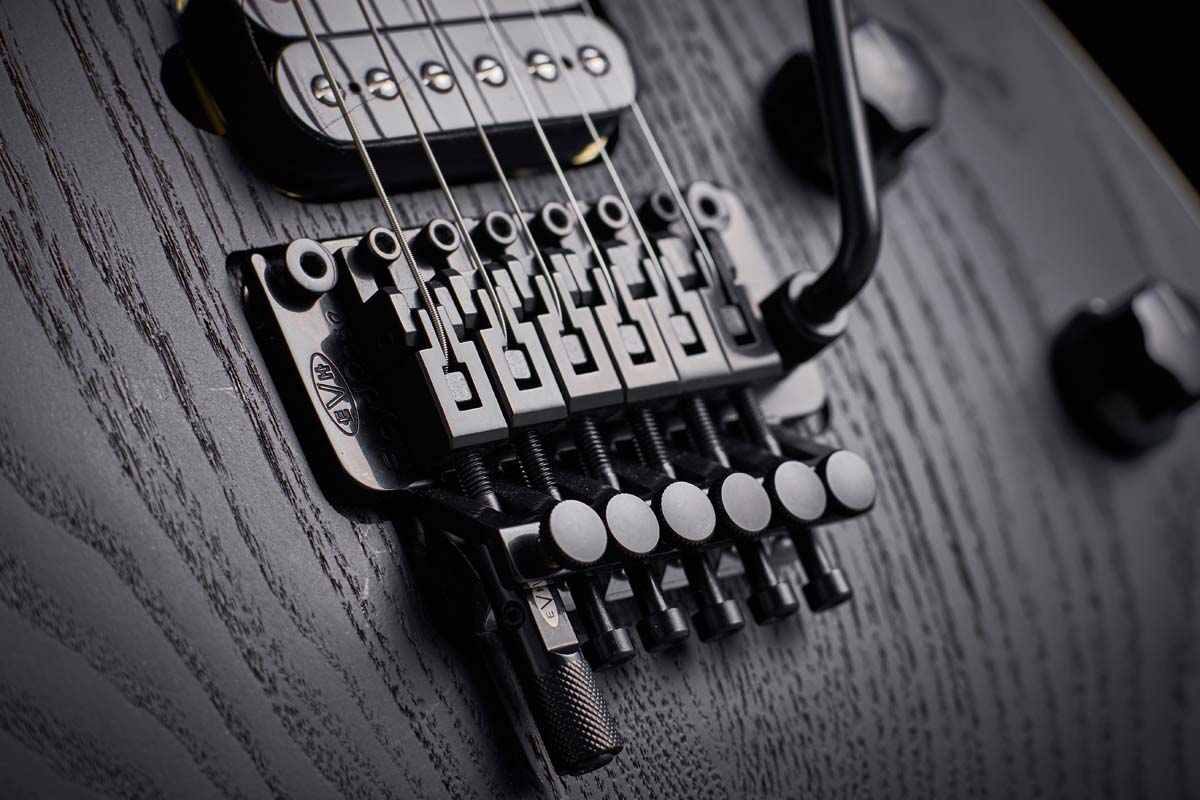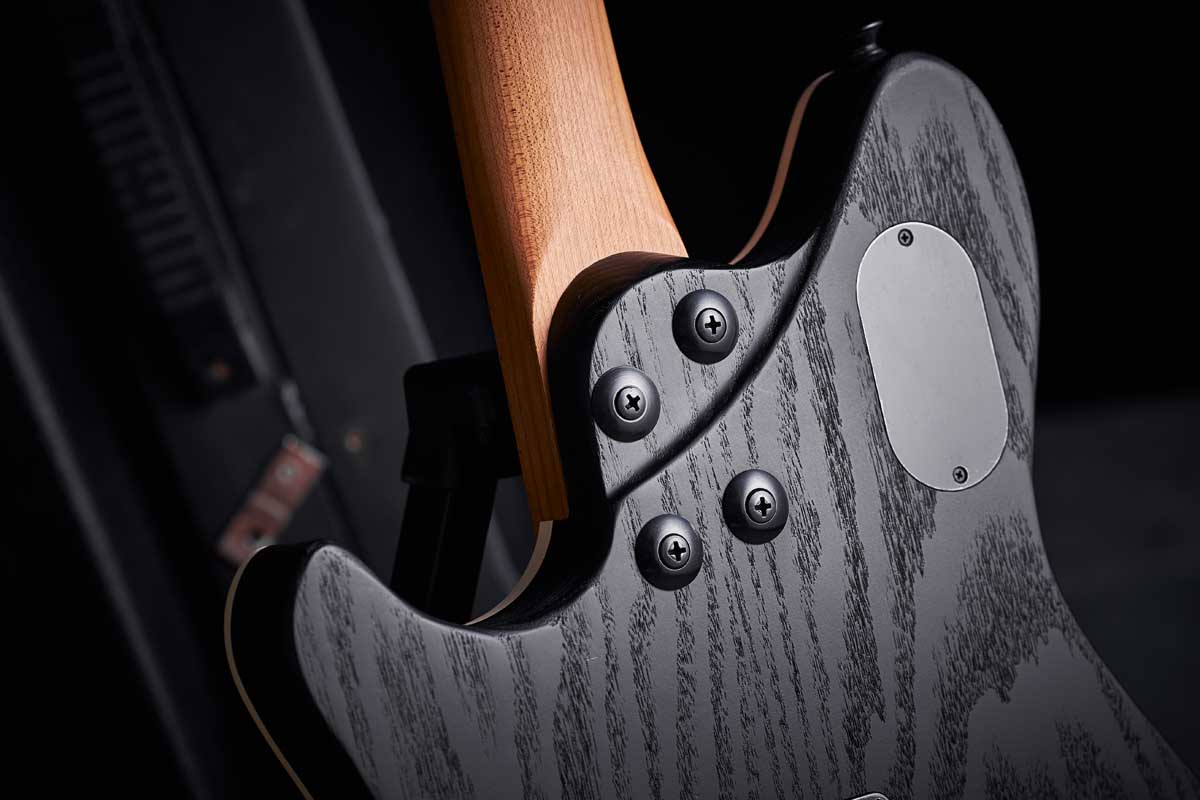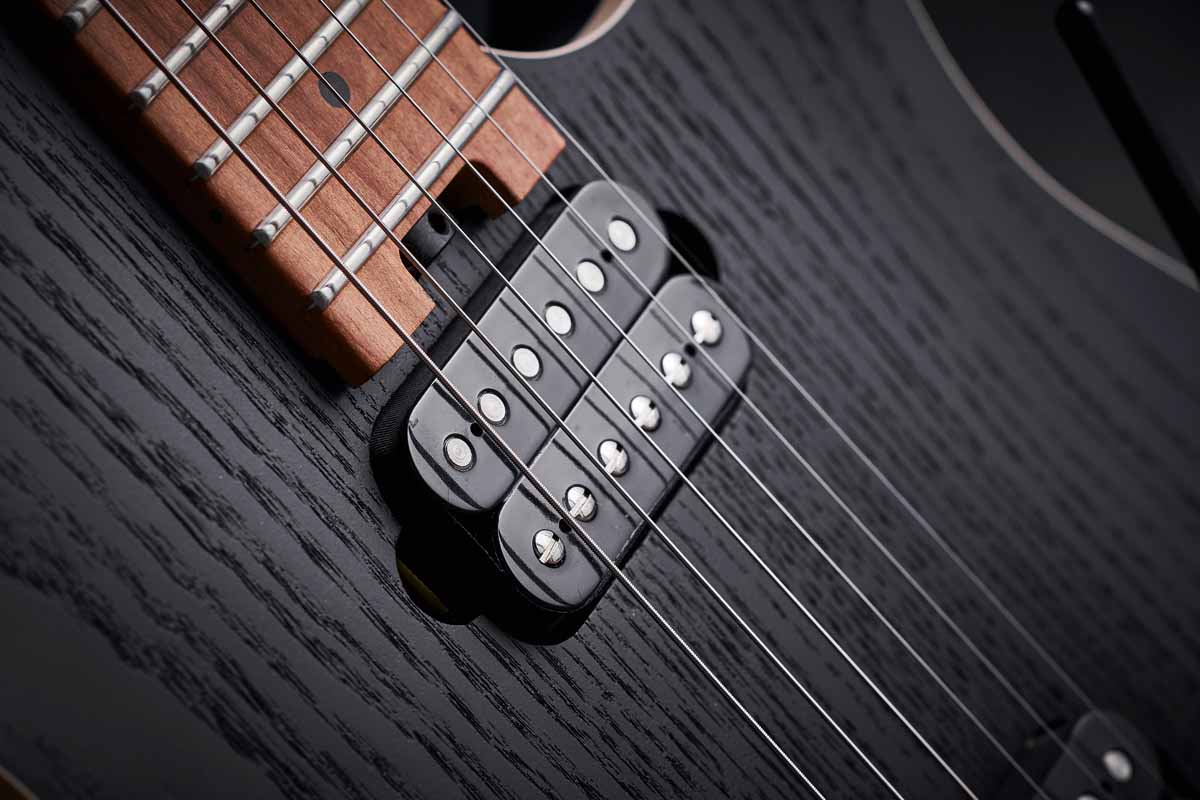Charvel Henrik Danhage Signature Pro-Mod So-Cal Style 1 and EVH Limited Edition Wolfgang Special Sassafras review
Two recent releases from Charvel and EVH brands remind us of the legacy and guitar design skills of Eddie Van Halen

Spending some time with these two guitars invariably took us back to the 80s when it seemed every guitar was little more than a fingerboard with a Floyd Rose vibrato.
Many of the ‘big hair’ bands and their music has aged, ahem, somewhat awkwardly, and the guitars they played seem equally far from classic. But as those of us of a certain age will remember, it was an explosive time for the electric guitar, and many of the heroes it produced really haven’t been bettered.
It might not be hip to admit it, but this writer is quite a closet fan of the polarising Floyd Rose vibrato – the essential piece of kit for any serious player back then, even if it was one of the many high-performance vibratos that came and went, some more thankfully than others.
Many of us don’t need to dump a vibrato so the strings literally fall off the fingerboard; try that in the wrong band and you’ll be shown the door. But with the expansive and great-sounding multi-effects we all have access to, the Floyd can be used in a highly creative fashion.




With less palaver than restringing a Bigsby and then trying to keep the lightest of wobbles in tune, the Floyd is dead easy to set up and string – so long as you have the right Allen key, of course.
Lock those strings at both the saddle and nut and – after some judicious string stretching – these things will stay in tune with all but the slightest tweak of those fine tuners. The cork-sniffing tone gurus will have something to say about that we expect, but far from being a ‘tone drain’, on the right guitar there’s nothing to touch it.
Irrespective of the artists behind these models, what they actually do is almost bookend Eddie’s stylistic journey, from the beat-up Frankenstein starting point style of the Henrik Charvel, to the altogether more considered and really very developed Wolfgang. Aside from being made in Fender’s Mexican factory, they share plenty.
All the latest guitar news, interviews, lessons, reviews, deals and more, direct to your inbox!
Henrik Danhage Signature Pro-Mod So-Cal Style 1

There’s nothing classy about the relic job of this Charvel: by design, it looks like the proverbial ‘I tied it to the bus and headed off on tour’ level of relicing. It’s a nice weight, and showcases a nicely jointed four-piece spread of tightly striped ash, which is really rather beautiful on the rib-cage contour, for example – and another reminder of a wood that we’re seeing in serious decline as far as the USA is concerned.
There’s a brutal simplicity that was so much a part of Van Halen’s original vision: bolt a neck to a body, chuck on a wide-travel vibrato and a couple of pickups, and the rest is down to you.
One area that’s more refined here is the neck: slim in depth but with dual graphite-rod reinforcement to hopefully keep it straight as you cross the time zones. If you need to tweak it, the truss rod adjustment wheel is at the end of the neck, and the compound radius fingerboard – similarly built for speed – frankly looks as worn out as the body.
Reverse headstock aside, this could once have been a '50s Stratocaster that has been extensively modded!
But there are some very nice touches, such as the heavy fingerboard edge rounding. Reverse headstock aside, this could once have been a '50s Stratocaster that has been extensively modded!
The zebra Seymour JB at the bridge will be familiar to most of us, but it’s paired with a DiMarzio Area 67, a hum-cancelling ‘single coil’. “Single coils in 1967 were bright and very clean,” says DiMarzio, “and, of course, they hummed. We’ve captured the classic bright and clean sound but totally eliminated the hum with our patented Area technology. We’ve also reduced magnet pull by 40 per cent for improved sustain and clarity.”
This hot-rod modded vibe continues to the controls – or lack of them. There’s just a single volume control, with its Stratocaster ‘Tone’ knob, of course. So how do you select the pickups? Easy. That single control has a push switch: down is bridge; up is neck. Both on? Nope.
EVH Limited Edition Wolfgang Special Sassafras

If Henrik’s signature has the look of something that was screwed together in the backyard and might need some help from The Repair Shop, the Wolfgang comes across as, well, a proper guitar.
It shares the same Fender scale as the Charvel signature, along with those graphite rods and wheel truss rod adjustor, but the slightly downsized body is going to look Les Paul-size tiny on a tall frame. You can clearly see the wood grain under the very thin and quite textured satin black finish (with its single cream edge binding) and if asked we’d say it was ash, too. It’s actually sassafras, a light and relatively soft wood from Eastern USA.




Fender believes Leo Fender used it to make an undisclosed number of Strats back in the 50s and it recently appeared on the Fender Stories Collection Eric Johnson 1954 ‘Virginia’ Stratocaster. Although it’s about 5mm thinner in depth at the rim compared with the 45mm-thick Charvel, the top’s arching increases the overall depth to 50mm. But it’s lighter than the ash-bodied Charvel on our scales – and feels it.
The small three-a-side headstock adds to the compact style, but it’s not just a size thing that differentiates the two: the EVH just seems more finished, particularly the rounded nose of the tiered heel join, the screws passing through individual domed washers as opposed to the Charvel’s chunky cast metal neckplate and standard squared-off Fender heel.
While both necks are maple, the EVH’s is roasted and quarter-sawn, which adds to the very contemporary specification. The drive is very simple here, too, but we get a proper tone control and a shoulder-placed three-way toggle to select the dual direct-mount EVH humbuckers.
We’re not done yet. Plating aside, we have the same Floyd Rose, but while it’s slightly recessed into the top, here it sits flat with no up-bend – typical EVH style. It also features that D-Tuna to drop the low E down a tone. It’s such a stable guitar, something that’s helped by the neck construction: a quick tune-up using the fine tuners when we started the test and that was it. Feel & Sounds


Both guitars share the same scale length and overall neck construction, and our calipers suggest the same-width jumbo fretwire (the EVH’s wire is very slightly lower) on the same 305mm to 406mm (12- to 16-inch) radius fingerboard. But the different profiles, depths and widths create a markedly different feel.
The Charvel’s ‘speed’ profile is a relatively thin depth’d D (19.3mm at the 1st fret and 21.2mm by the 12th) with its back feeling flatter than it actually is.
The EVH isn’t a million miles away, but the additional depth (19.9mm at the 1st fret and 23mm by the 12th) feels a little more classic, and it’s marginally thinner in width, too: 41.5mm at the nut and 51.24mm at the 12th fret compared with the Charvel’s 43.1mm nut width and 52.63mm dimension at the 12th fret. Both have nicely rounded fingerboard edges, especially the Charvel.
The EVH seemingly has a fuller voice with more depth – more ‘Gibson’ to the Charvel’s ‘Fender’
With its ‘dirty’ maple face, it certainly creates the look and feel of being heavily played. Getting used to each guitar and playing unplugged also gives us a hint of the sonic differences. There’s a little more snap to the very Fender-y sounding unplugged voice of the Charvel.
The EVH has slightly less zing and is less snappy, but both have a wonderfully fulsome sustain development. These similarities in build belie the rather different sounds they produce. The Charvel’s voice comes across as lighter in the low-end and brighter, too.
The JB at the bridge has power and quite an upper midrange attack that’s completely contrasted by the Area 67 at the neck, which has the sort of spank you’d expect from a brightly voiced Strat’s neck pickup. The EVH seemingly has a fuller voice with more depth – more ‘Gibson’ to the Charvel’s ‘Fender’, if you like. Here, the bridge initially sounds fuller with a little more cocked wah-like tonality and almost a little less hot-sounding than that JB.

But recording both – playing the same parts through the same gained Marshall, and with battering ram drums and bass – the overall tonality at the bridge is actually very similar, even when the tracks are solo’d. We’d swear they sound more different when we listen in front of our amp.
Not for the first time, then, that actually evaluating the ‘front of house’ mix proves quite a leveller. The EVH’s neck voice is obviously very different from the Charvel’s and it keeps the full-fat tonality of the bridge, although it’s softer, nicely vocal and needs some amp sizzle to give it clarity.
The mix, missing from the Charvel, is quite distinct and adds some welcome bounce for a very usable third voice, combining thickness but with some of the funkier clarity you’d expect in this parallel link. Its volume and tone work very well to subtly tame the beast, too.
The treble bleed is certainly useful, allowing you to clean up heavier gains. However, to approach that Area 67 sound of the Charvel you’d need some coil splits, which, to be honest, would probably be very useful here when we have this much wire involved.


Verdict
We like our pigeonholes and the inclusion of a Floyd Rose vibrato instantly suggests a genre-specific instrument. And, yes, both of these allow you to rip it up, warble and waggle in spades.
But just studying a spec sheet doesn’t tell anywhere near the full story. Firstly, both are exceptionally stable in terms of tuning, even with some heavy vibrato use. They’re also great weights and, with a couple of minor exceptions, are 100 per cent performance-ready.
Plus, in the same way someone such as Mike Stern uses seemingly inappropriate hot pickups on his Yamaha signature to produce big fat and rounded cleans, the EVH does exactly that here. In short, to pigeonhole these as simply metal guitars is really missing the point.
Neither is a particularly cheap date, and neither comes with even a gigbag. But these models possess a huge amount of mojo, both for their intended purposes and a lot more besides. From his early beat-up hot-rod style to the much more refined and considered Wolfgang, we have an awful lot to thank Eddie for.
Charvel Henrik Danhage Pro-Mod So-Cal Style 1
4 out of 5
Pros: A great example of an 80s-style hot-rod ‘SuperStrat’; great weight and neck feel; contrasting pickups.
Cons: Just one relic'd colour; no gigbag supplied.
EVH Limited Edition Wolfgang Special Sassafras
4.5 out of 5
Pros: Simply a great guitar design: lightweight, superb neck construction and feel, excellent tuning stability, and big sounds.
Cons: No gigbag.
Specifications
Charvel Henrik Danhage Pro-Mod So-Cal Style 1

- PRICE: £1,519 / $1,599
- ORIGIN: Mexico
- TYPE: Double-cutaway relic'd solidbody
- BODY: Ash
- NECK: Maple, graphite reinforced, ‘speed’ profile bolt-on
- SCALE LENGTH: 648mm (25.5”)
- NUT/WIDTH: Locking/43.1mm
- FINGERBOARD: Maple, black dot inlays, 305-406mm (12-16”) radius
- FRETS: 22, jumbo
- HARDWARE: Floyd Rose 1000 series double-locking vibrato, Charvel logo’d die-cast tuners – chrome-plated
- STRING SPACING, BRIDGE: 52mm
- ELECTRICS: Seymour Duncan JB TB-4 humbucker (bridge), DiMarzio Area 67 DP419CR (neck), master volume (with ‘tone’ knob and a push switch to voice pickups: down, bridge; up, neck)
- WEIGHT (kg/lb): 3.51/7.72
- OPTIONS: None
- LEFT-HANDERS: No
- FINISHES: White Relic (as reviewed) – semi-gloss lacquer to body, handrubbed satin urethane to neck
- CONTACT: Charvel
EVH Limited Edition Wolfgang Special Sassafras

- PRICE: $1,399 / £1,089
- ORIGIN: Mexico
- TYPE: Double-cutaway arched top solidbody
- BODY: Sassafras
- NECK: Baked maple, graphite reinforced, Wolfgang profile, bolt-on
- SCALE LENGTH: 648mm (25.5”)
- NUT/WIDTH: Locking/41.5mm
- FINGERBOARD: Baked maple, black dot inlays, 305-406mm (12-16”) radius
- FRETS: 22, jumbo
- HARDWARE: Floyd Rose 1000 series double-locking vibrato (with brass block), EVH-logo’d Gotoh tuners – black
- STRING SPACING, BRIDGE: 52mm
- ELECTRICS: Direct mount EVH Wolfgang humbuckers, 3-way toggle pickup selector switch, master volume (Bourns low friction) and master tone (Bourns high friction)
- WEIGHT (kg/lb): 3.01/6.62
- OPTIONS: None
- LEFT-HANDERS: No
- FINISHES: Satin Black (as reviewed) – satin urethane to body, hand-rubbed satin urethane to neck
- CONTACT: EVH Gear

Dave Burrluck is one of the world’s most experienced guitar journalists, who started writing back in the '80s for International Musician and Recording World, co-founded The Guitar Magazine and has been the Gear Reviews Editor of Guitarist magazine for the past two decades. Along the way, Dave has been the sole author of The PRS Guitar Book and The Player's Guide to Guitar Maintenance as well as contributing to numerous other books on the electric guitar. Dave is an active gigging and recording musician and still finds time to make, repair and mod guitars, not least for Guitarist’s The Mod Squad.
